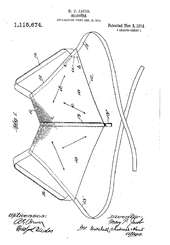Yes, part 3. No we aren’t done yet. Almost.
After you had put on your chemise or vest and bloomers or drawers and fastened the corset and brassiere combination that best fit your form, you were ready to fasten your hose to your garters. Most corsets had built in garters or hose supporters, but if they did not, or you were one of those girls who chose not to wear a corset, then you could buy or make garters of pretty ribbon over tight elastic to hold up your hose.
Hose were mostly delicate knit silk or a fabric called Lisle which was very fine, tightly woven cotton and came in many colors. However rayon hose were available at a less expensive price, claiming equal quality and better wear. In winter months thicker cotton, sometimes ribbed hose were worn for warmth. The hose were seamed at the back with reinforced heels, usually pointed. For a short period of time mid-decade, shorter knee hose were in fashion that were woven with tight elastic at the top and required no garters to hold them up. Much like modern knee socks I imagine. They were usually decorated with silk ribbons or rosettes.
After you had put on your chemise or vest and bloomers or drawers and fastened the corset and brassiere combination that best fit your form, you were ready to fasten your hose to your garters. Most corsets had built in garters or hose supporters, but if they did not, or you were one of those girls who chose not to wear a corset, then you could buy or make garters of pretty ribbon over tight elastic to hold up your hose.
Hose were mostly delicate knit silk or a fabric called Lisle which was very fine, tightly woven cotton and came in many colors. However rayon hose were available at a less expensive price, claiming equal quality and better wear. In winter months thicker cotton, sometimes ribbed hose were worn for warmth. The hose were seamed at the back with reinforced heels, usually pointed. For a short period of time mid-decade, shorter knee hose were in fashion that were woven with tight elastic at the top and required no garters to hold them up. Much like modern knee socks I imagine. They were usually decorated with silk ribbons or rosettes.
 |
| 1920's Stockings |
Your next layer depended entirely on the outfit that you were going to wear. If you were going to wear a lovely sheer blouse, very popular from 1920-1924 and your favorite skirt you would wear a corset cover or a camisole to hide your corset and give the blouse a pretty background on which to lay. A corset cover had larger cap sleeves made of beautiful lace, where as a camisole had thin straps like a slip. As these dainty, feminine blouses began to fade from catalogs in favor of the more simple "manish" shirts of the later half of the decade, so did the camisole and corset cover.
 |
| 1920's Corset Covers and Camisoles |
A vestee was often worn with a sweater or a suit and was basically a false shirt front.
 |
| 1920's Vestees |
 |
| 1920's Vestees, Collars, and Cuffs |
If you were wearing one of the long, sheer tunic style gowns that defined 1920’s fashion, you would wear a slip usually made in matching fabric especially for the gown, however standard black ready-made "costume" slips were available at shops and in catalogs. A white or flesh color slip would be worn under any other one piece dress, often with a "shadow proof" hem of double fabric layers to prevent light from casting shadows through sheer or semi-sheer dresses.
 |
| 1920's Costume Slips |
 |
| 1920's Slips |
Last but not least, less beautiful, maybe even more necessary, the question no one EVER wants to talk about...what did they do for sanitary protection?? Well, let me tell you it wasn’t pretty!! Given most of the options, I believe I would have just hibernated for four or five days every month!! Cumbersome and bulky only scratch the surface, not to mention yucky and gross!
Women wore sanitary belts made out of elastic webbing in which they fastened home made or store bought "sanitary napkins". Some such napkins were made of diaper cloth and were washed and reused in the same fashion cloth baby diapers were (and you thought you hated to do laundry!), others could be purchased from department stores that were made of a Cellulose core covered with cheese cloth and claimed to be "flushable", however they appear to me to be a plumbers worst nightmare!
 |
| 1920's Sanitary Napkins |
 |
| 1920's Sanitary Belts, Aprons, and Napkins |
Over this lovely belted ensemble you could wear a "comfortable" rubberized step-in, a rubberized sanitary "apron" or petticoat, or all of the above depending on your level of paranoia! I have this mental image of stiff, waddling women that crinkled when they walked!!
 |
| 1920's Rubberized Sanitary Step-Ins |
 |
| 1920's Rubberized Sanitary Slips, Aprons, and Belts |
I don’t plan on ever taking my reconstruction THIS seriously!! I believe some modern inventions and advancements are to be embraced!!





















